Immunoglobulin
* Modeling of objects was carried out on the basis of data obtained by atomic force and electron microscopy.
* The diameter of the rotavirus is 76 nm, the diameter of the epithelial cell is 1000 nm.
* It is impossible to observe viruses with an optical microscope, with which you can recognize the colors of the object. To see objects smaller than the wavelength of visible light (400-800 nm), you need a wave with a smaller wavelength. Electron microscopes use electron “waves” to see objects as small as 5 nm – small enough to see most viruses in considerable detail, but only in black and white. So, objects in this clip were colored to simplify perception.
* Chemical elements were shown based on known atomic sizes. Carbon - black, 170 pm; hydrogen - white, 53 pm; oxygen - red, 152 pm; nitrogen - blue, 155 pm; sulfur - yellow, 100 rm.
* Oscillations of atoms and movement of objects were shown conditionally.
* IgG was used to create the clip, other classes of immunoglobulins known to humans (IgA, IgD, IgE and IgM) were not shown.
* Interaction with NK cells (natural killers) was not shown.
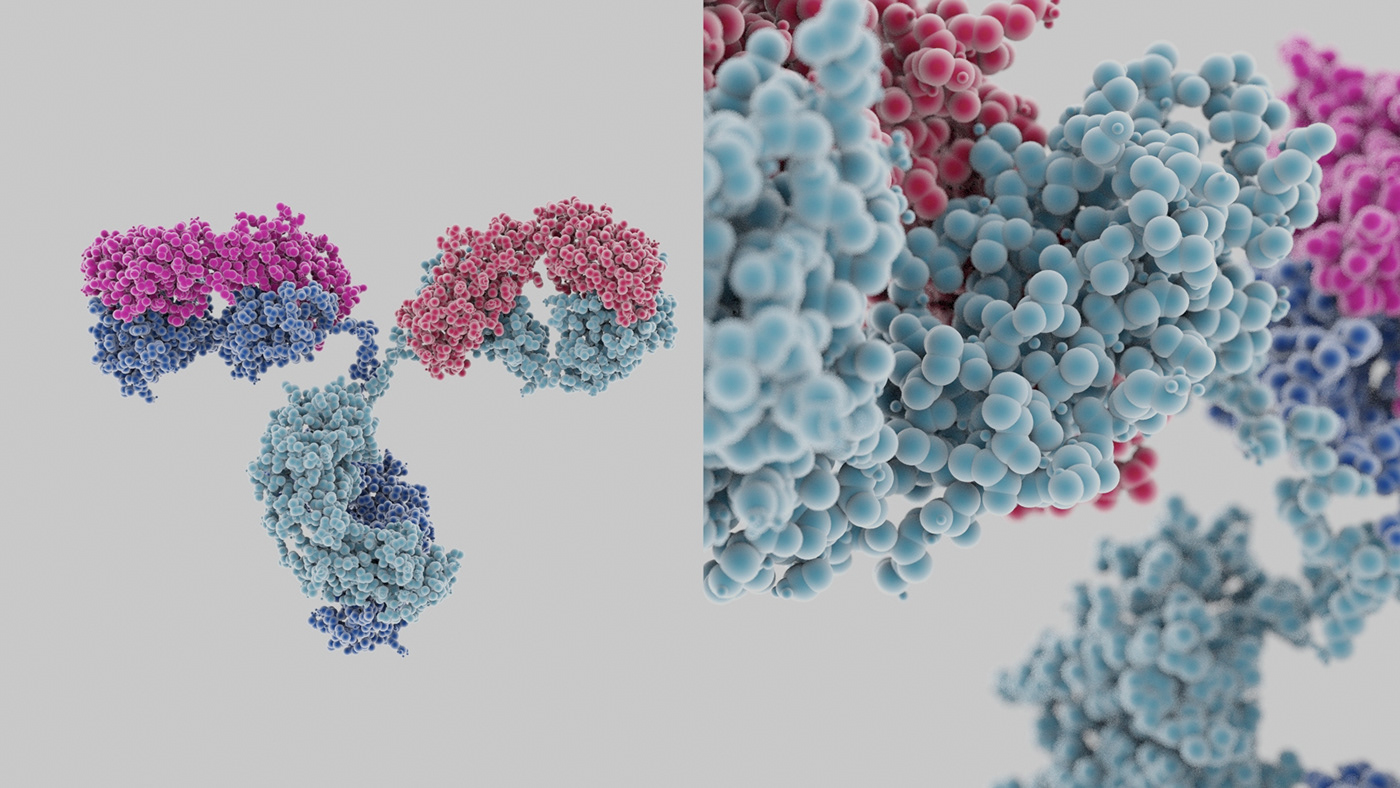
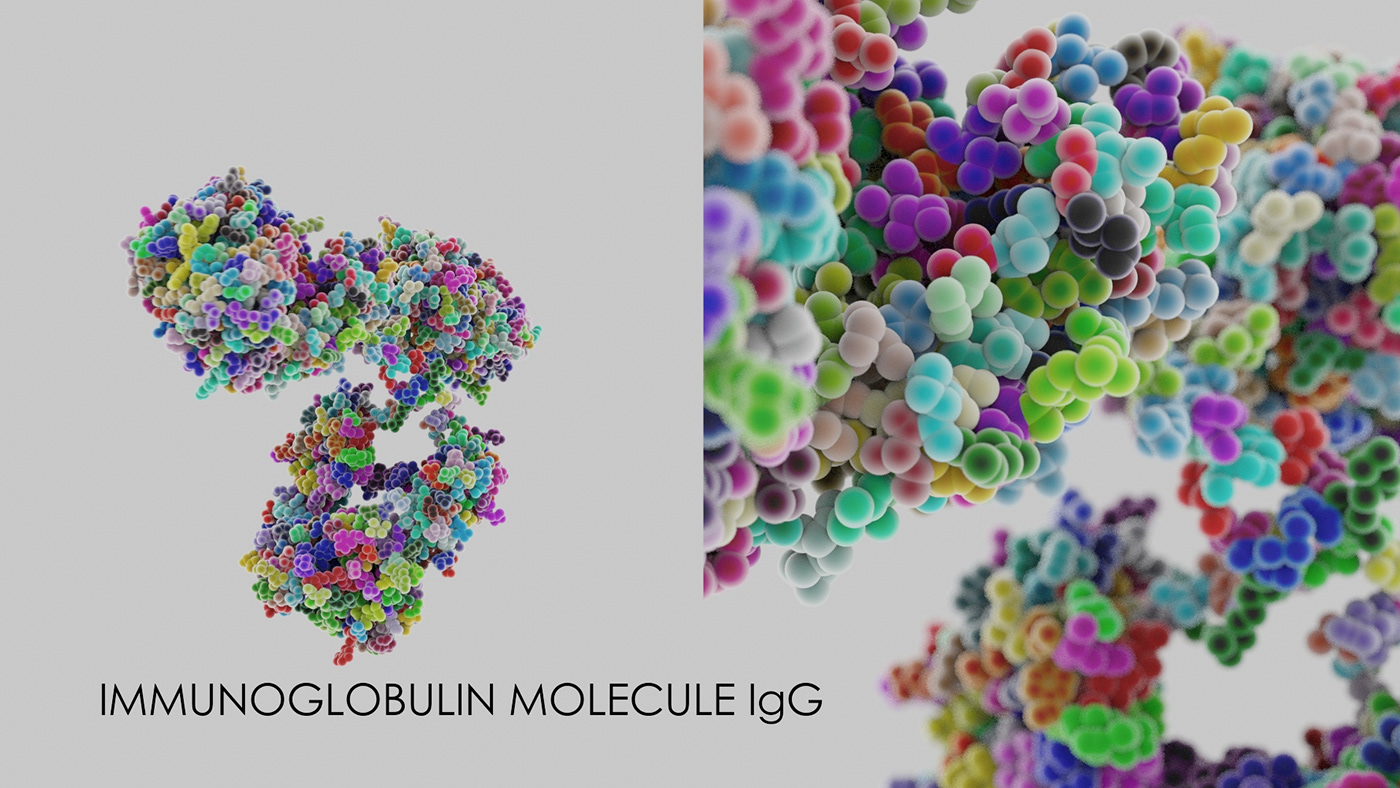




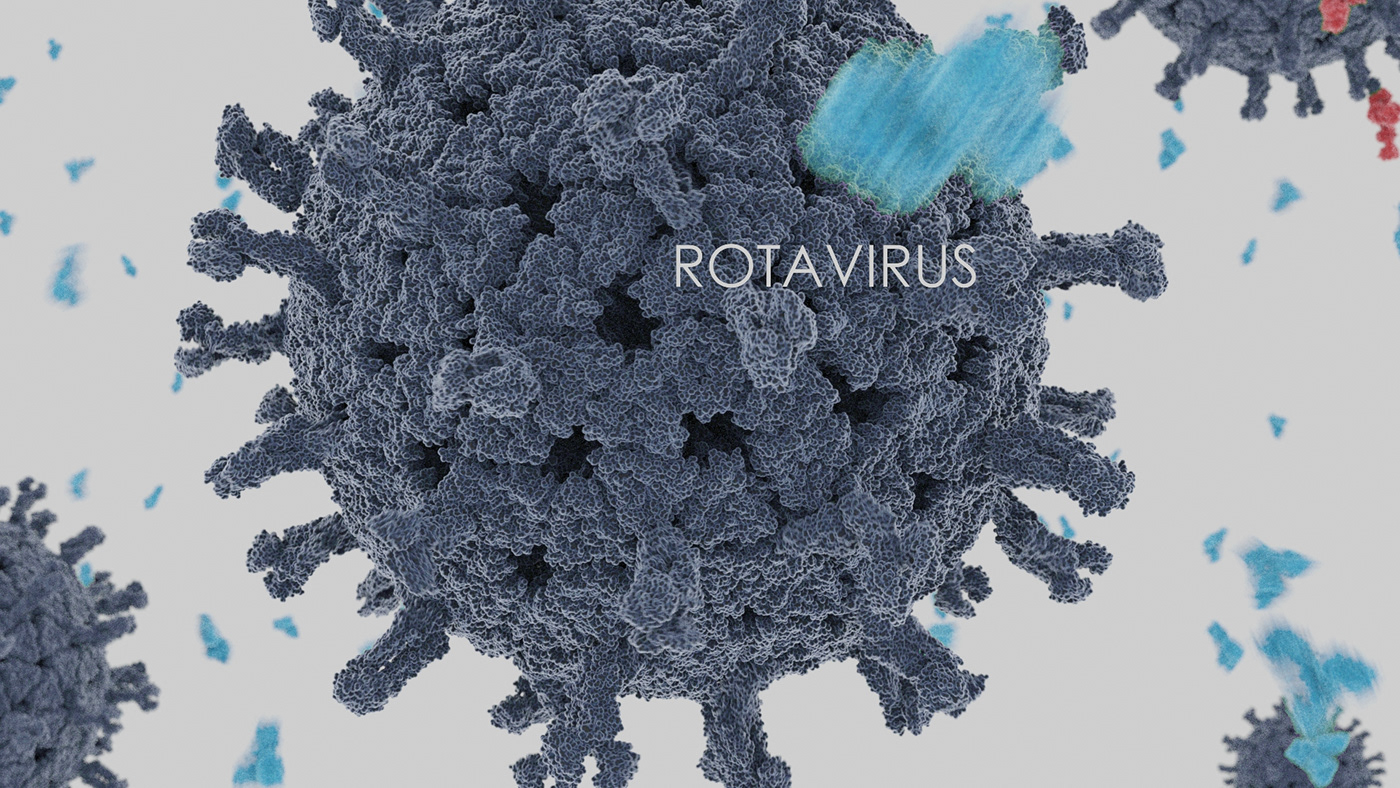


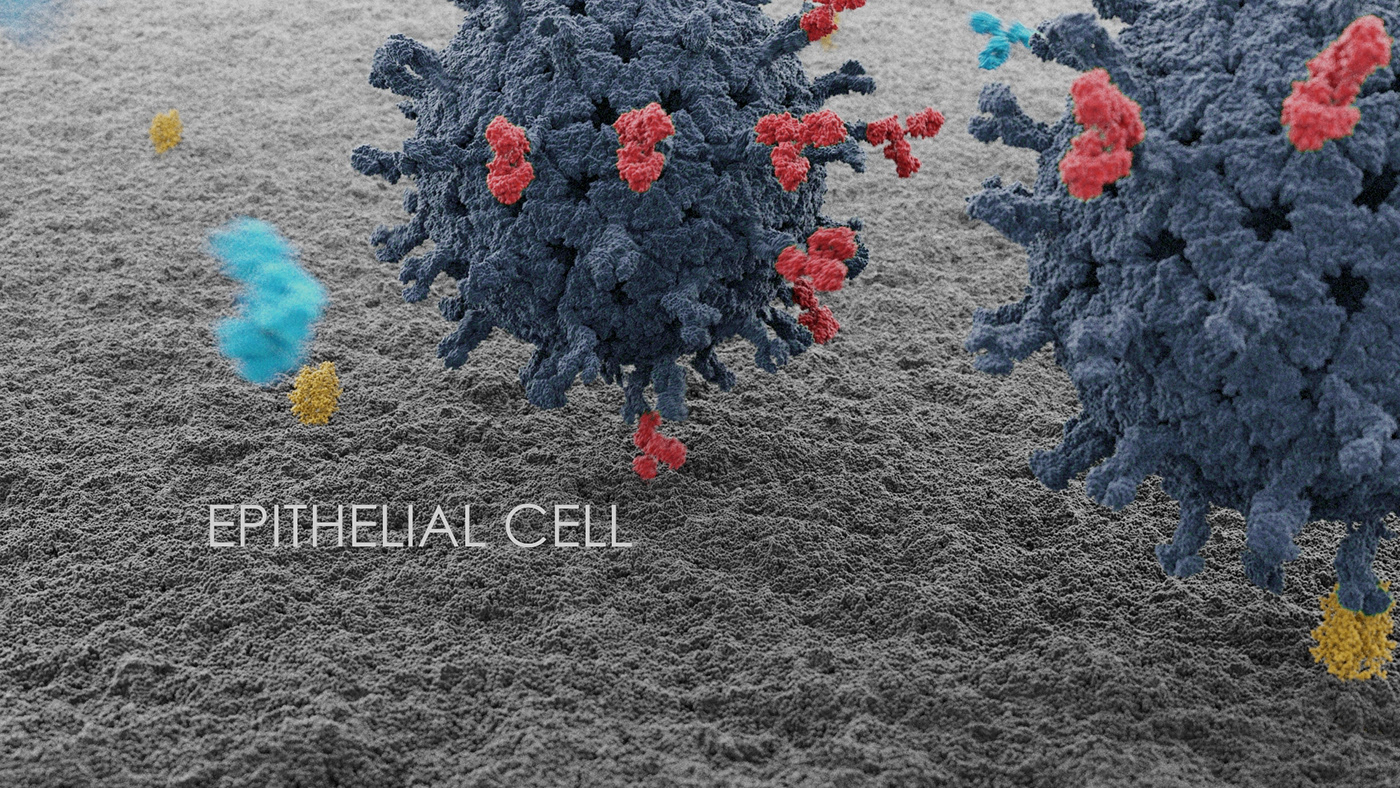
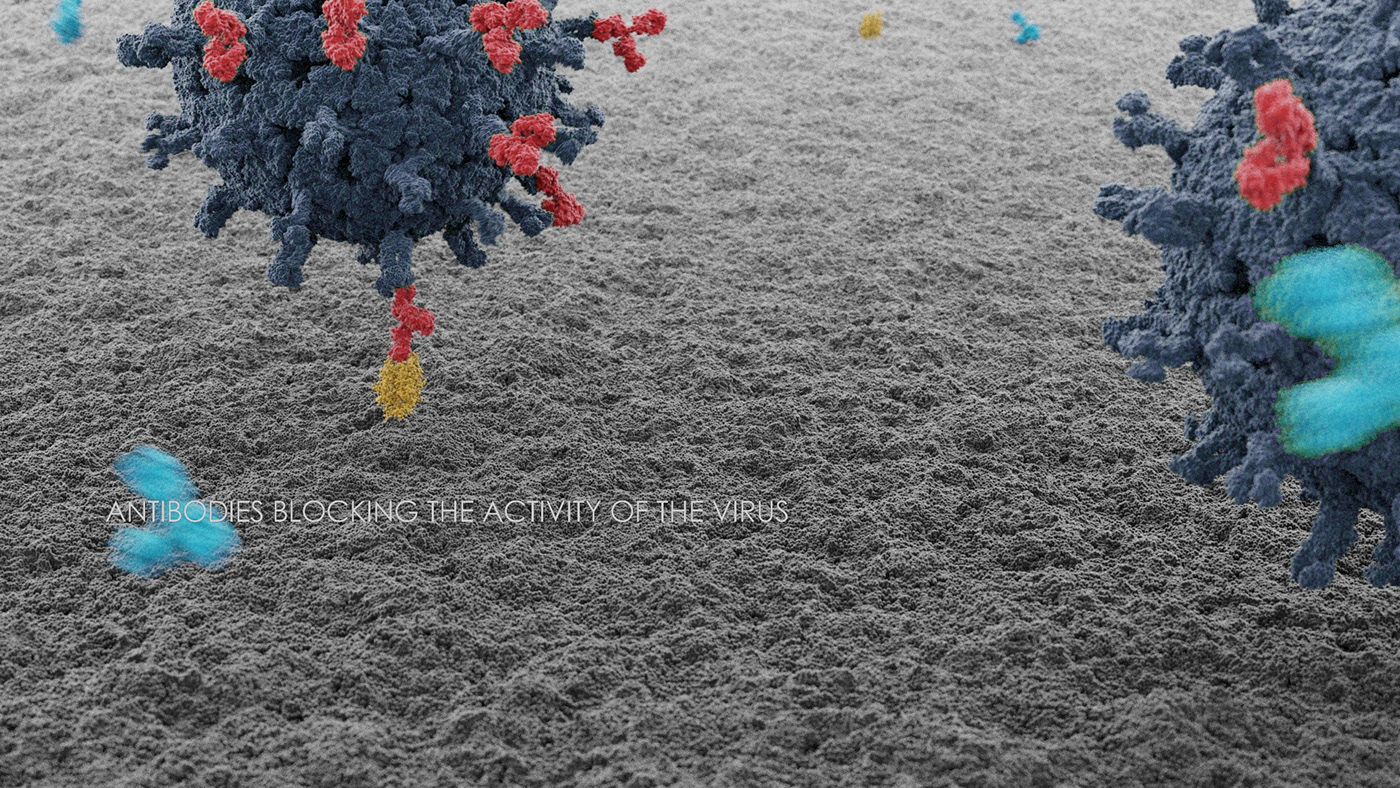
Alexey Solodovnikov : cg
Valerya Arkhipova : science consultant


